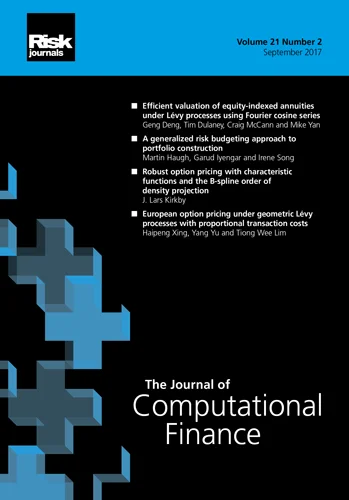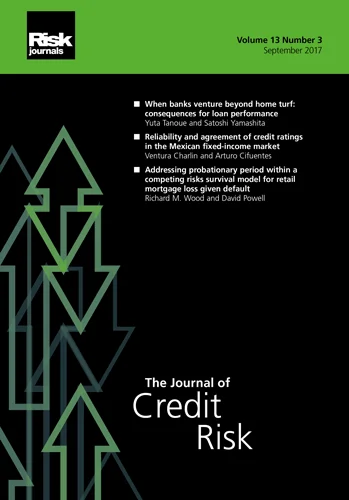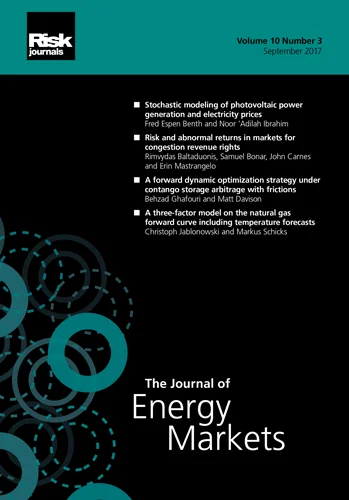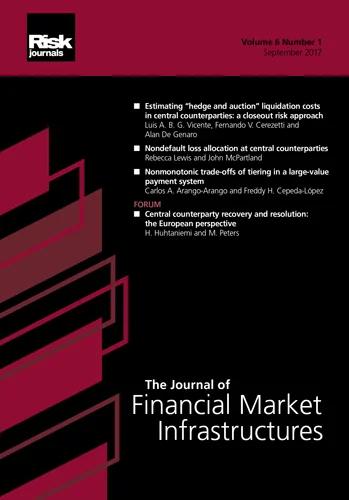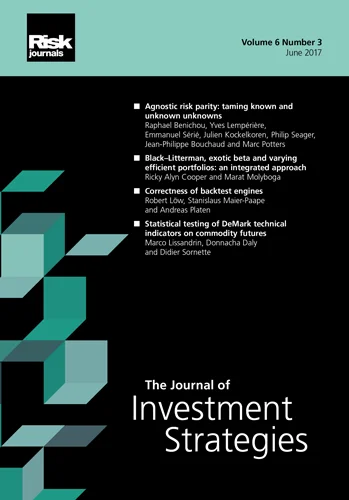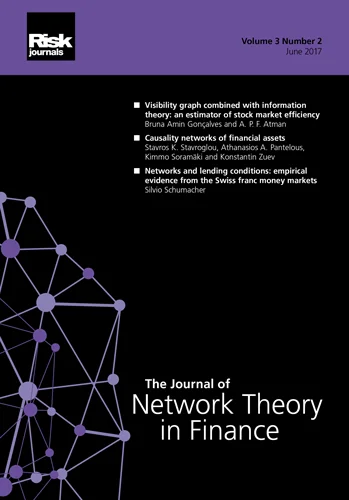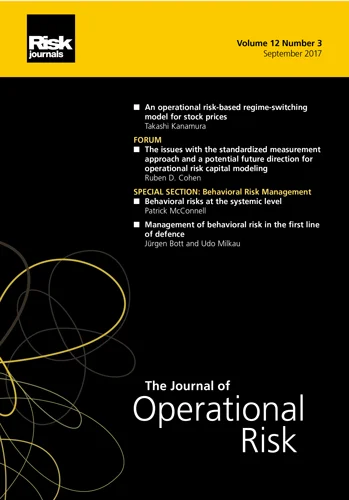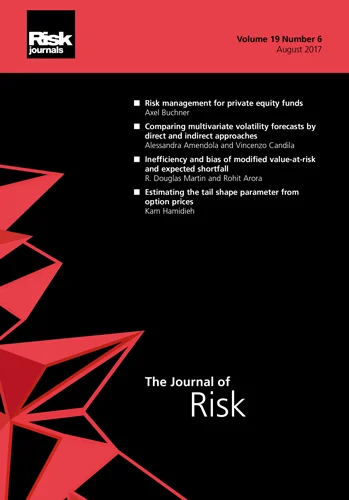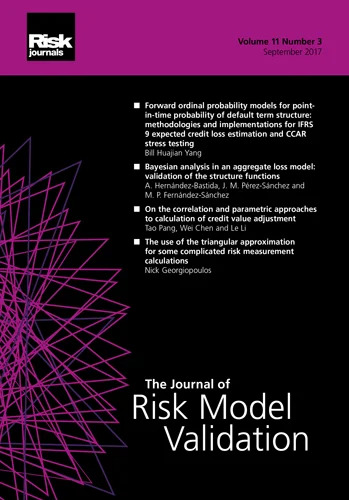Journal of Operational Risk
ISSN:
1755-2710 (online)
Editor-in-chief: Marcelo Cruz
Volume 20, Number 1 (March 2025)
Editor's Letter
Marcelo Cruz
Editor-in-chief
Welcome to the first issue of Volume 20 of The Journal of Operational Risk.
Lately, I have been in discussions with practitioners about the challenges the banking industry faces as the Basel Committee on Banking Supervision (BCBS) seems to be moving away from internal risk models developed by banks’ analysts toward more standardized regulatory models. One of the primary concerns is the potential loss of risk sensitivity, as standardized models may not fully capture the unique risk profiles of individual banks, leading to either excessive capital requirements for low-risk portfolios or insufficient coverage for high-risk exposures. This shift could also reduce banks’ incentives to invest in advanced risk management capabilities as their ability to differentiate through superior risk modeling diminishes. Additionally, the transition to standardized models may increase compliance costs, requiring banks to overhaul existing systems and processes to align with new regulatory mandates. Smaller and mid-sized banks, which may have relied on internal models to optimize capital efficiency, could face disproportionate impacts, potentially reducing their competitiveness against larger institutions. Ultimately, while the shift aims to enhance transparency and comparability, it may also introduce rigidity, limiting banks’ ability to respond dynamically to evolving financial risks. This issue contains, among other things, a very interesting paper from a former regulator, Robert Stewart, on exactly this subject – I strongly recommend it.
The issue also contains a bibliometric analysis of the literature that highlights opportunities for additional exploration in the risk management domain, including evaluating how strong creditor rights influence firms in reducing risk; the relationship between weak litigation systems, recovery rates and the increased default risk associated with leverage in developing markets; developing more accurate proxies for operational hedging and enterprise risk management (ERM) to better understand their implementation and effects; and investigating methods to increase the adoption and effectiveness of corporate risk management in emerging markets. In addition to the three analytical research papers, this issue contains a Forum paper, as a thought piece to encourage analytical research.
The editorial board would be interested to see submitted papers in the areas highlighted by the abovementioned bibliometric analysis as well as applications of machine learning (ML) techniques and artificial intelligence (AI) – one of the industry’s hot topics. Papers on cyber and IT risks (not just their quantification but also on better ways to manage them) and on ERM and everything this broad subject encompasses (eg, establishing risk policies and procedures, implementing firm-wide controls, risk aggregation, revamping risk organization, internal audit) would also be very welcome. Analytical papers on operational risk measurement are also keenly sought, particularly those that focus on stress testing and managing operational risk.
These are certainly exciting times! The Journal of Operational Risk, as the leading publication in this area, aims to be at the forefront of OpRisk discussions and we welcome papers that shed light on all of the above topics.
RESEARCH PAPERS
In the issue’s first paper, “Navigating risk horizons: a comprehensive bibliometric analysis of corporate risk management”, Shubhangi Bedi, Keshav Malhotra and Meena Sharma conduct an extensive literature review on the practical application of corporate risk management in business management in light of the ever-changing business landscape, with the objective of examining the various research trends within this domain from 1999 to 2022 and pinpointing potential future research directions. Through the use of bibliometric and visual analysis methods, this study systematically scrutinizes 100 research papers sourced from leading business journals within the Scopus database, and utilizes a content analysis approach, extracting future research suggestions from prominent papers within each cluster.
The second paper in the issue, “Operational risk, capital regulation and model risk” by Robert Stewart, details how operational risk capital regulation is moving from internal to standardized models: that is, from the BCBS’s advanced measurement approach to the standardized measurement approach. The results of these changes are well known: politically connected banks will further decrease their equity financing, making bank failures and taxpayer-backed bailouts more likely. Yet the goal of OpRisk modeling must be to create useful models that capture relevant aspects of reality and improve decision-making. Stewart therefore suggests that such modeling should assimilate seven fundamental properties into an operational risk managerial framework: well-aligned incentives, awareness of data inaccuracies, explanation of empirical realities, acknowledgement of unknown unknowns, communication of uncertainty, creation of feedback loops, and recognition of dynamics. This paper is an essential read for operational risk managers, regulators and examiners.
In “Enhancing organizational sustainability through human resource analytics: examining the moderating effect of organizational culture”, the issue’s third paper, Vishnu Priya Selvaraj and Santhi Venkatakrishnan investigate the relationship between human resources (HR) analytics and organizational sustainability, with a focus on information technology-based organizations. Their sampling frame consists of HR officials working in various organizations across IT industries in India, targeting a representative group of 381 HR professionals through a closed-end surveybased questionnaire. The authors use statistical techniques such as factor analysis and regression tests as HR analytics tools. Their results show a positive relationship between HR analytics factors and organizational sustainability, with the organizational culture as a moderator influencing the variables. Selvaraj and Venkatakrishnan highlight the importance of understanding organizational culture in HR analytics. Their study refers to other HR-analytics-based research, and it provides a literature review of studies on factors affecting organizational sustainability and culture. The authors find that HR analytics significantly enhances organizational sustainability by optimizing workforce strategies and improving decision-making, with a strong, adaptive organizational culture amplifying these benefits. Their research suggests that while descriptive analytics tools are more frequently used, the effective integration of predictive and prescriptive analytics could further bolster sustainability efforts and strategic planning.
FORUM PAPER
“The robot-labeling phenomenon: robot-ready modern operational risk management” by Alexandra Priszny´ak highlights the fact that human-free bank branches operating autonomously with software and embodied robots are now a reality, posing significant operational risks. Robots utilizing diverse underlying technologies exhibit varying risk profiles based on their intelligence and level of autonomy. Priszny´ak suggests that risks stemming from robot-related incidents should be integrated into the BCBS’s existing framework, and that understanding the definition of “robot” in the banking sector is therefore crucial for effective operational risk management. This study fills a gap in the literature by discussing the robot-labeling phenomenon (ie, indiscriminate use of the term “robot” to mean both a physical and digital form) and highlighting its widespread misuse in the literature and in banking practice. The author’s analysis of the Hungarian Operational Risk (HunOR) database reveals that current operations do not record robot autonomy or human oversight, and human-centered risk categorization predominates in risk event categorization, which lacks specific categories for autonomous AI or robots. Priszny´ak advocates for a shift in the operational risk management mindset to address synthetic era challenges through enhanced risk profiling, human–robot task trade-off catalogs, incident catalogs, OpRisk database modernization, training and the establishment of cross-functional robotics forums.
Papers in this issue
Navigating risk horizons: a comprehensive bibliometric analysis of corporate risk management
The authors conduct a bibliometric analysis of 100 research papers to identify trends within corporate risk management.
Operational risk, capital regulation and model risk
The author proposes seven basic properties for operational risk modelling to form an operational risk management framework.
Enhancing organizational sustainability through human resource analytics: examining the moderating effect of organizational culture
Focussing on information-technology-based organizations, the authors investigate links between human resources analytics and organizational sustainability, finding HR analytics to enhance organizational sustainability.
The robot-labeling phenomenon: robot-ready modern operational risk management
The author highlights misuse of the term "robot" in banking practice and the literature, proposes the robot-labelling phenomenon and recommends a shift in approaches to operational risk management to address challenges of the synthetic era.
